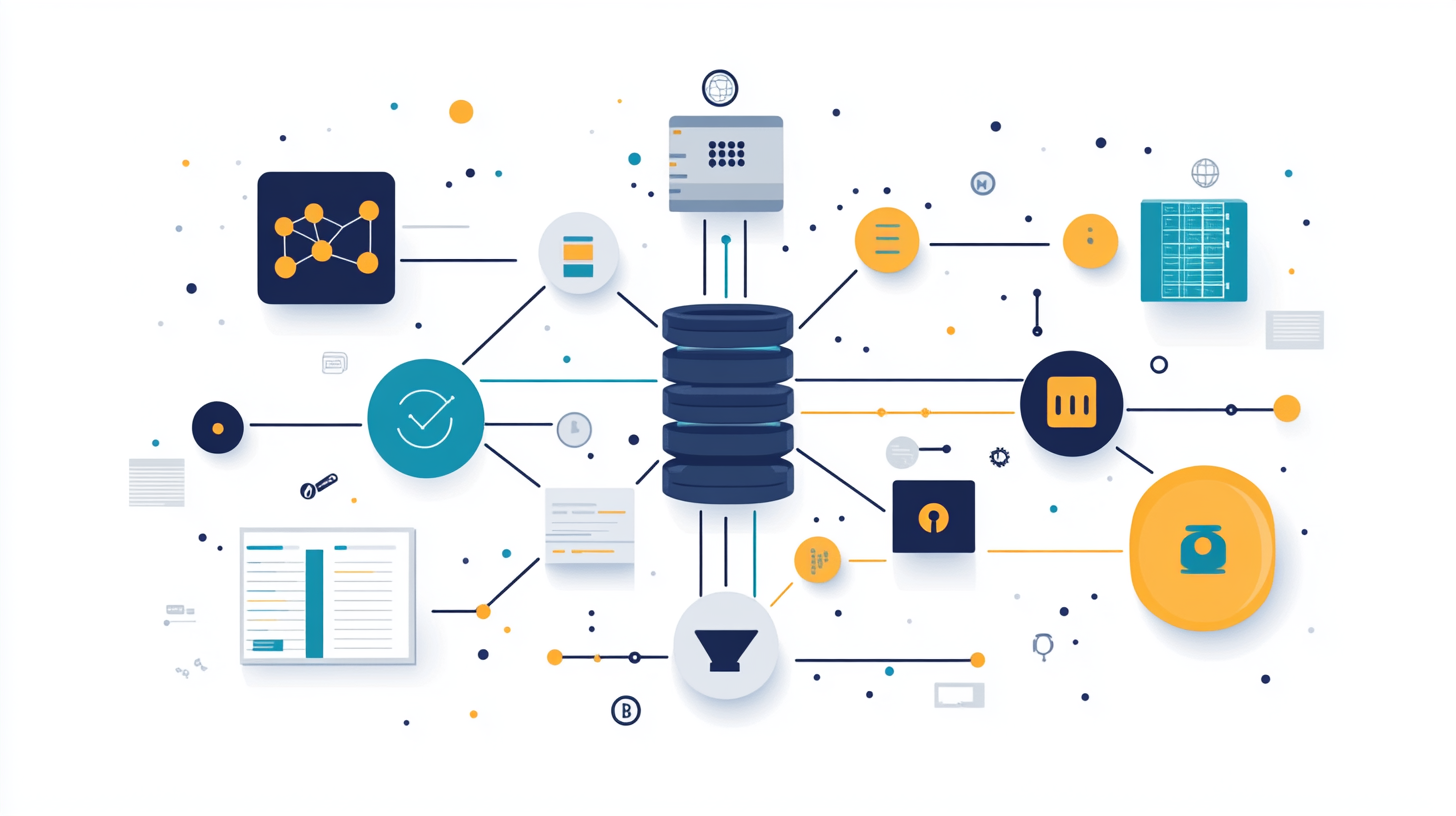From Impostor to Impact: Breaking Through Self-Doubt in Tech
Impostor syndrome is common in tech—but it’s not a life sentence. By understanding its roots and using practical strategies to rebuild confidence, software engineers can shift from self-doubt to meaningful momentum in their careers.
Introduction
On a rainy Tuesday afternoon, a mid-level software engineer stared at their screen, fingers poised above the keyboard, hesitating before pushing the code that had taken two grueling days to write. Despite multiple successful unit tests and a clean review from a senior colleague, a familiar thought intruded: “This isn’t good enough. I’m not good enough. Sooner or later, they’ll find out I’m a fraud.” That engineer could be anyone—a recent bootcamp graduate, a ten-year veteran, or even a tech lead at a well-known startup. Impostor syndrome doesn’t discriminate.
In the high-pressure, constantly evolving world of software engineering, self-doubt can become more than a passing thought—it can root itself deeply into the psyche, affecting performance, motivation, and mental health. Often fueled by the breakneck pace of innovation, intense comparison culture, and opaque standards for success, engineers internalize feelings of inadequacy that persist even in the face of clear accomplishments. It’s a silent battle playing out behind Slack messages and pull requests, yet it's remarkably common.
But here’s the truth: self-doubt isn’t a reflection of incompetence. It’s often a byproduct of growth, ambition, and the harsh psychological climate of modern tech.
More importantly, it’s not a life sentence. This article explores the hidden mechanics of impostor syndrome and the comparison trap that so often paralyze even the most capable engineers. It will also offer clear, evidence-based strategies for reclaiming confidence, increasing visibility, and building the kind of momentum that leads to not just surviving, but thriving.
Impostor syndrome thrives in isolation, but confidence is built through understanding, community, and deliberate action. It’s time to break the silence—and begin the transition from impostor to impact.
Understanding the Root of Self-Doubt in Tech
Impostor syndrome doesn’t originate in a vacuum. In the context of the tech industry, it often emerges from a unique collision of psychological vulnerabilities and environmental conditions. While the term impostor phenomenon was first introduced by psychologists Pauline Clance and Suzanne Imes in 1978 to describe high-achieving individuals who struggle to internalize their accomplishments, its expression in software engineering takes on distinct characteristics shaped by the industry’s relentless pace and culture of mastery.
The High Bar of “Competence” in Tech
The landscape of software engineering is defined by its steep learning curves and rapid technological churn. Mastery in one language or framework can feel fleeting, as tools evolve and paradigms shift. Engineers are often expected to be generalists and specialists simultaneously—capable of understanding system architecture while debugging obscure race conditions or optimizing Kubernetes configurations.
This expectation creates a persistent sense of inadequacy, even among experienced professionals. Engineers may interpret normal uncertainty as evidence of personal failure. The belief that “everyone else has it figured out” persists, in part, because technical expertise is rarely communicated with vulnerability. Code reviews, conference talks, and documentation often present polished outputs, concealing the messy, iterative process behind them. The result? Engineers internalize a flawed model of success—one that seems effortless, complete, and perpetually out of reach.
Cognitive Mechanisms That Undermine Confidence
Several well-documented psychological mechanisms underlie impostor feelings. Among them:
- Perfectionism: Engineers often work in high-stakes environments where bugs can cause production outages or security flaws. This drives a culture of perfectionism, where anything short of flawless execution feels like failure. According to a systematic review published in the Journal of General Internal Medicine, perfectionism correlates strongly with impostor syndrome, particularly in high-achieving environments like STEM and medicine (Bravata et al., 2020).
- Cognitive Dissonance: Engineers may struggle to reconcile their external successes with their internal self-perceptions. When they receive praise or promotions, instead of accepting the recognition, they attribute it to luck or mistake. This disconnect can lead to cognitive dissonance, which reinforces self-doubt rather than relieving it.
- Self-Criticism and Negative Filtering: The engineer who completes five features and misses a deadline on the sixth is more likely to obsess over the failure than internalize the five wins. This negative filtering—a cognitive distortion in which the individual fixates on mistakes while ignoring successes—is a core feature of impostor syndrome and anxiety-related thought patterns.
Cultural Norms That Amplify Doubt
Beyond individual psychology, the culture of tech often amplifies self-doubt. A few critical factors include:
- The Myth of the “10x Engineer”: This persistent trope—that a small handful of engineers are inherently more valuable than others—distorts perceptions of competence. It suggests that value is innate and elite, rather than developed and contextual. For those not fitting that archetype, feelings of inadequacy can seem inevitable.
- Status-Driven Recognition: In many organizations, promotions and high-profile projects are awarded based on visibility rather than effort or collaboration. Engineers who excel quietly or contribute behind the scenes may feel overlooked, fueling self-doubt about their worth.
- Gatekeeping and Jargon: From job descriptions laden with unnecessary complexity to interviews designed to filter rather than nurture talent, gatekeeping behavior contributes to a culture where many feel like outsiders—even after they’re “in.”
Innovation as a Double-Edged Sword
Ironically, one of tech’s greatest strengths—its emphasis on continuous innovation—can also exacerbate self-doubt. When everyone is expected to be constantly learning, shipping, and leveling up, there’s little room to rest or reflect. The result is a kind of professional vertigo: no matter how far you've climbed, you're always looking up at someone higher on the ladder.
In reality, feeling uncertain in tech isn’t a red flag—it’s often a marker of being engaged, ambitious, and open to growth. But without naming and normalizing this experience, too many engineers mistake healthy humility for unworthiness.
The Comparison Trap: How It Undermines Progress
In the digital age, software engineers are more connected than ever. Platforms like GitHub, LinkedIn, and Twitter showcase peers' achievements—be it a newly released open-source project, a conference talk, or a recent promotion. While these platforms can inspire, they often lead to detrimental self-comparisons. This phenomenon, known as the comparison trap, can significantly undermine an engineer's confidence and career progression.
The Visibility of Others' Achievements
Social media platforms frequently highlight the successes and skills of prominent programmers. This constant exposure can inadvertently lead to impostor syndrome among newcomers or those who feel inadequate. It's important to remember that everyone has their own unique journey.
For instance, a developer might see a peer's polished GitHub repository and feel inferior, not realizing the countless hours and iterations behind it. Similarly, observing colleagues receiving accolades or speaking at conferences can create a skewed perception that others are consistently outperforming, leading to feelings of inadequacy.
The Role of Social Media and Internal Metrics
Social media amplifies this effect. Platforms like Facebook and Twitter allow users to present curated versions of their lives, often emphasizing successes while omitting struggles. This selective sharing fosters a social comparison bias, where individuals perceive others as leading more successful or fulfilling lives, leading to decreased self-esteem and increased anxiety.
Within organizations, internal metrics and recognition systems can further exacerbate this issue. When promotions and high-profile projects are awarded based on visibility rather than effort or collaboration, engineers who excel quietly or contribute behind the scenes may feel overlooked, fueling self-doubt about their worth.
Cognitive Distortions in Self-Comparison
Several cognitive distortions contribute to the harmful effects of the comparison trap:
- Mental Filtering: Focusing solely on others' successes while ignoring their challenges or failures.
- Disqualifying the Positive: Dismissing one's achievements as luck or insignificant.
- Should Statements: Believing one should have achieved more, leading to feelings of failure.
- Labeling: Assigning negative labels to oneself based on perceived shortcomings.
Recognizing and addressing these distortions through self-awareness and cognitive-behavioral strategies can lead to meaningful improvements in well-being and performance.
Breaking Free from the Comparison Trap
To mitigate the effects of the comparison trap:
- Limit Social Media Exposure: Allocate specific times for social media use and avoid mindless scrolling.
- Celebrate Personal Achievements: Regularly acknowledge and reflect on your accomplishments, no matter how small.
- Seek Constructive Feedback: Engage with mentors or peers who can provide balanced perspectives on your work.
- Practice Self-Compassion: Understand that everyone has unique strengths and areas for growth.
By consciously shifting focus from external comparisons to internal growth, engineers can rebuild self-trust, increase visibility, and gain momentum in their careers.
Diagnosing the Symptoms: What Impostor Syndrome Looks Like in Practice
Impostor syndrome manifests in various ways, often subtly influencing behaviors and emotions. Recognizing these symptoms is the first step toward addressing and overcoming them.
Common Behaviors
- Overworking: Individuals may put in excessive hours, believing they need to prove their worth through relentless effort. This can lead to burnout and decreased productivity.
- Procrastination: Fear of failure or not meeting high standards can cause delays in starting or completing tasks. This avoidance behavior stems from a desire to maintain the illusion of competence.
- Reluctance to Apply for Promotions or Speak Up: Despite qualifications, individuals may hesitate to seek advancement or share ideas, fearing exposure as a fraud. This self-imposed limitation hinders career growth.
Emotional Patterns
- Anxiety and Fear of Exposure: A persistent fear of being "found out" can lead to chronic anxiety, affecting both personal well-being and professional performance.
- Invalidation of Achievements: Successes are often attributed to luck or external factors, rather than personal ability. This mindset prevents individuals from internalizing accomplishments and building confidence.
Impact on Career Growth and Mental Health
The cumulative effect of these behaviors and emotions can be detrimental:
- Stalled Career Progression: Avoiding new challenges or leadership roles limits professional development and visibility within an organization.
- Mental Health Struggles: The constant pressure to perform and fear of inadequacy can lead to stress, anxiety, and depression.
Understanding these manifestations of impostor syndrome is crucial. By identifying and acknowledging these patterns, individuals can begin to implement strategies to combat self-doubt and foster a healthier, more productive professional life.
Turning Inward: Tools to Rebuild Confidence
Overcoming impostor syndrome isn’t just about proving others wrong—it’s about realigning how you perceive yourself. Much of the work involves internal reframing: learning to recognize the mental patterns that reinforce self-doubt and replacing them with tools that foster clarity, resilience, and self-trust. This section focuses on concrete strategies engineers can use to shift from self-sabotage to self-support.
Reframing Negative Self-Talk
At the heart of impostor syndrome lies an inner narrative shaped by self-criticism and perfectionism. These internal scripts often sound like:
- “I was just lucky to get this job.”
- “If I ask for help, they’ll think I’m incompetent.”
- “I should already know this.”
Cognitive-behavioral therapy (CBT) techniques provide practical ways to challenge these thoughts. According to research in the Journal of Rational-Emotive & Cognitive-Behavior Therapy, reframing negative automatic thoughts through cognitive restructuring significantly reduces feelings of inadequacy and improves performance outcomes in high-pressure environments (David et al., 2017).
Try this technique:
- Identify the thought: “I’m not smart enough to lead this project.”
- Challenge the distortion: “What evidence supports or contradicts this?”
- Replace with an alternative: “I have experience managing similar features. It’s okay to learn as I go.”
Over time, this mental habit reduces the sting of self-doubt and builds a more grounded internal voice.
Journaling and Mindfulness for Self-Awareness
One powerful way to build self-awareness is through structured journaling. Reflective writing helps you separate perception from reality, track emotional patterns, and notice incremental growth. Research published in JMIR Mental Health found that expressive writing interventions led to increased confidence and reduced depressive symptoms in professionals across various industries (Baikie & Wilhelm, 2005).
Start simple:
- What did I do well today?
- What challenges did I face, and how did I respond?
- What feedback have I received lately?
Pairing journaling with mindfulness can further deepen this awareness. Daily mindfulness practice—such as 10 minutes of breath-focused meditation—has been linked to reduced anxiety and improved cognitive performance in high-pressure fields like engineering and medicine (Zeidan et al., 2010).
Goal-Setting and the Power of Small Wins
Many engineers dealing with impostor syndrome focus only on long-term mastery—“being an expert”—rather than appreciating incremental progress. This mindset leads to chronic dissatisfaction. A better approach involves breaking goals into manageable, meaningful steps.
Teresa Amabile’s research at Harvard Business School on the “progress principle” underscores this: people feel most motivated and fulfilled when they make consistent progress on meaningful work, even in small amounts (Amabile & Kramer, 2011).
How to apply it:
- Set weekly learning goals (e.g., learn one new command in your CLI tool).
- Create checklists of completed tasks to visualize momentum.
- Review and celebrate milestones, even informal ones (e.g., mentoring a colleague, resolving a tricky bug).
This method reframes the journey as cumulative rather than binary—progress, not perfection.
Building a Feedback Loop of Confidence
Confidence doesn’t appear fully formed—it grows from evidence. To reinforce it, engineers can create feedback loops that emphasize visibility, acknowledgment, and reflection.
Elements of a healthy feedback loop:
- Request constructive feedback regularly, not just in performance reviews.
- Document praise—keep a “kudos” file of positive feedback, successful launches, or mentoring wins.
- Reflect monthly on what you’ve learned or contributed.
This loop shifts the brain’s default pattern from scanning for inadequacy to scanning for accomplishment. Over time, this strengthens what psychologist Albert Bandura termed self-efficacy: the belief in one’s ability to execute tasks and achieve goals (Bandura, 1997).
Practical Tools & Frameworks to Try
- The STAR Technique: Useful for tracking progress or preparing for evaluations. Outline a situation, task, action, and result to give structure to your experiences.
- Daily Standups for One: Borrow from Agile by starting your day with a solo “What did I do yesterday? What will I do today? Any blockers?” This reinforces momentum.
- Impostor Check-In Prompts:
- What would I say to a friend in my situation?
- Am I assuming perfection is required?
- What evidence contradicts my self-doubt?
External Support Systems: Mentors, Peers, and Managers
Overcoming impostor syndrome and self-doubt isn't solely an internal endeavor; external support systems play a pivotal role in fostering confidence and professional growth. Engaging with mentors, peers, and managers can provide the necessary feedback, perspective, and encouragement to navigate the challenges of the tech industry.
The Power of Mentorship
Mentorship offers a structured avenue for growth, providing guidance, knowledge sharing, and emotional support. For software engineers, mentors can demystify complex topics, offer career advice, and share personal experiences of overcoming similar challenges. As highlighted by Pragmatic Engineer, both informal and formal mentorships from experienced engineers and managers are invaluable for professional development .
Programs like CodePath emphasize the importance of personalized mentorship, matching students with mentors aligned with their career interests to provide tailored guidance and support . Such relationships can accelerate learning, build confidence, and open doors to new opportunities.
The Role of Peers
Peers serve as immediate support networks, offering camaraderie and shared experiences. Engaging in peer code reviews, collaborative projects, and knowledge-sharing sessions can normalize challenges and reduce feelings of isolation. Open communication among peers fosters a culture of mutual learning and support, essential for combating self-doubt.
Managerial Support and Psychological Safety
Managers have a significant impact on creating environments where team members feel safe to express ideas, ask questions, and admit mistakes without fear of negative consequences. This concept, known as psychological safety, is crucial for team performance and individual well-being. Research indicates that psychological safety is a key factor in effective teams, allowing members to take risks and engage in open dialogue .
Leaders can promote psychological safety by:
- Encouraging open communication and active listening.
- Providing constructive feedback focused on growth.
- Recognizing and valuing diverse perspectives.
- Modeling vulnerability by acknowledging their own mistakes.
Constructive Feedback as a Growth Tool
Feedback, when delivered thoughtfully, serves as a powerful tool for personal and professional development. Constructive feedback helps individuals understand the impact of their actions, fosters empathy, and transforms potential conflicts into opportunities for collaboration .
Effective feedback practices include:
- Being specific and focusing on behaviors rather than personal attributes.
- Balancing positive reinforcement with areas for improvement.
- Encouraging self-reflection and dialogue.
- Delivering feedback in a timely and respectful manner.
By cultivating a culture where feedback is viewed as a pathway to growth rather than criticism, teams can enhance trust, collaboration, and overall performance.
From Surviving to Thriving: Building Career Momentum
Transitioning from persistent self-doubt to confident contribution is not only possible—it’s a hallmark of long-term success in tech. The key is understanding that momentum, not perfection, is the true engine of growth. For software engineers facing impostor syndrome, shifting the focus from “proving” themselves to “progressing” through steady, meaningful work is a transformative step.
Let Go of the Linear Career Myth
Tech careers rarely follow a predictable path. Lateral moves, skill pivots, and even temporary plateaus are common—and often necessary—for long-term development. This non-linearity can trigger impostor feelings, especially when comparing yourself to peers who appear to be on a faster or more traditional trajectory.
However, research from the Harvard Business Review emphasizes that non-linear career paths often lead to richer skill sets and greater adaptability, both of which are critical in modern technical roles (Ibarra, 2004). Viewing detours as exploration rather than deviation helps normalize nontraditional progress.
Momentum Over Perfection
Perfectionism is one of the most pervasive drivers of impostor syndrome. It leads to overwork, procrastination, and fear-based avoidance of new challenges. But in reality, consistent, visible effort—especially when paired with curiosity—is far more valuable than perceived flawlessness.
As product leader Thiago Ghisi outlines in his widely circulated article, the best way to grow a strong tech career is by working in short, focused cycles: reflecting on your current skills, identifying specific areas for growth, and making small but deliberate steps toward them (Ghisi, 2020). This process builds self-efficacy, confidence, and recognition over time.
Tips for creating momentum:
- Focus on completing one small but meaningful technical task each day.
- Make learning goals project-based and time-bounded.
- Use a “progress journal” to track what you learned or shipped weekly.
- Avoid the trap of “tutorial purgatory” by integrating learning with doing.
Internal Progress, External Recognition
Confidence grows when personal development is reinforced by external feedback. But engineers struggling with impostor syndrome often undervalue their contributions or fear visibility. Creating a system for tracking and reflecting on wins can counteract this. For instance:
- Keep a “wins doc” of completed tasks, user impact, and praise.
- Participate in demo days or retros to build visibility in a low-stakes way.
- Reflect regularly: What did I learn? What did I unblock for others? What did I create?
According to research in The Progress Principle by Teresa Amabile and Steven Kramer, even small daily wins contribute to a disproportionate increase in motivation and creativity at work (Amabile & Kramer, 2011).
Building a Long-Term Mindset
Sustainable growth in tech isn’t built on heroic effort; it’s built on aligned effort over time. Consider shifting your internal narrative from “Am I good enough?” to “Am I improving?” This growth orientation not only builds resilience, it also reduces the pressure to be extraordinary and replaces it with the joy of continuous development.
As the saying goes in Agile: “Done is better than perfect.” The same applies to your career—progress, even if imperfect, is the fuel for long-term thriving.
Conclusion
Impostor syndrome is not a flaw—it’s a deeply human response to growth, uncertainty, and ambition. In the fast-moving world of software engineering, where the bar for competence is high and the pressure to constantly improve is relentless, self-doubt can feel like an unavoidable companion. But it doesn’t have to be a permanent one.
Throughout this article, we’ve explored the psychological roots of impostor syndrome, the cultural norms in tech that amplify it, and the comparison habits that quietly chip away at confidence. We’ve also outlined practical, research-backed strategies for reframing self-talk, building resilience, and developing internal and external systems of support. The throughline is clear: confidence is not bestowed—it is built.
Overcoming impostor syndrome isn’t about eliminating doubt altogether. It’s about learning to recognize when self-doubt is distorting reality, and responding with tools instead of self-criticism. It’s about reconnecting with your value, acknowledging your growth, and giving yourself permission to be a work in progress—just like the code you ship.
To thrive in tech, you don’t need to be a genius, a guru, or a unicorn. You need curiosity, consistency, and the courage to keep showing up. And when you build momentum on your own terms—anchored in truth rather than fear—you don’t just survive the industry. You shape it.
So, wherever you are in your journey—whether you’re debugging your first pull request or leading a team through a complex architectural shift—remember: you’re not an impostor. You’re an engineer in motion.














Discussion